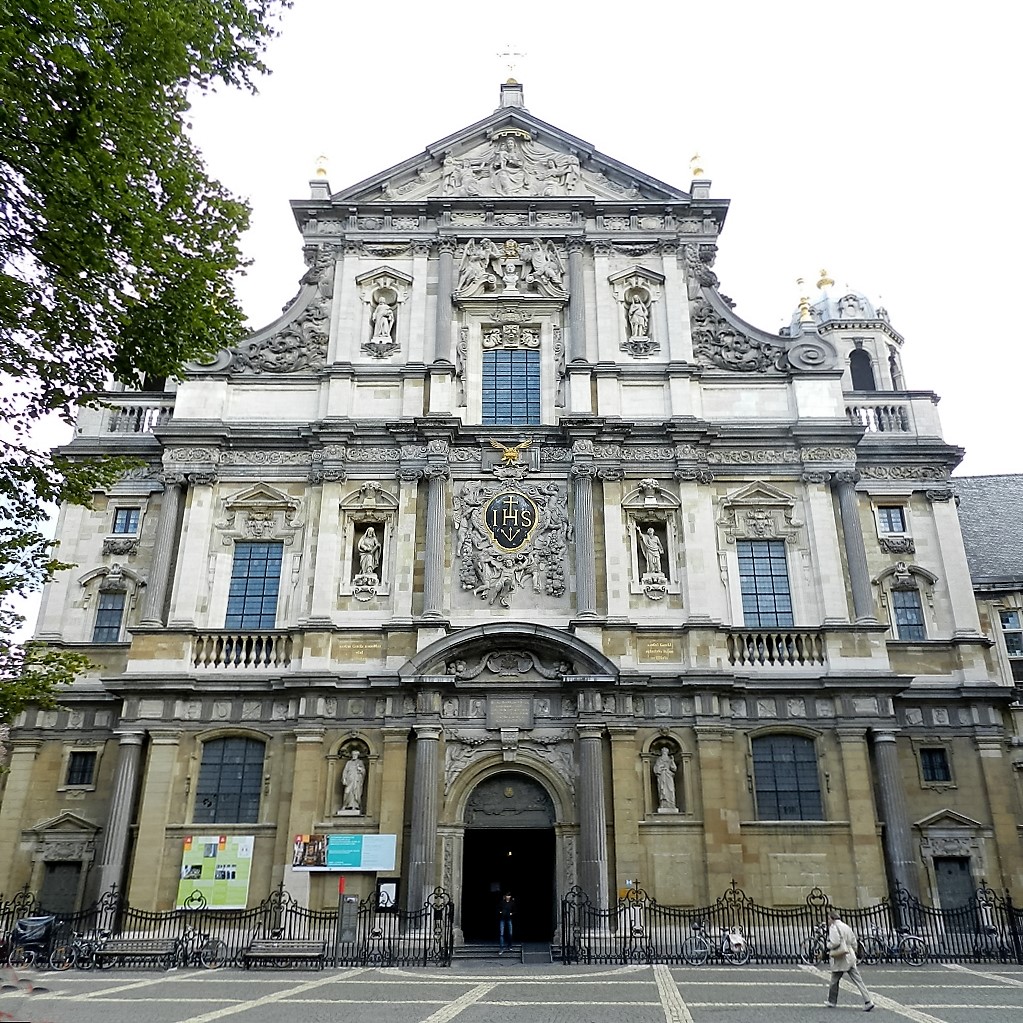The Antwerp jesuit church, a revelation.
Introduction

The imaginative power of Catholic faith and the conceited craving for Baroque decorum have created an astonishing monument. In its time, this church was fully modern, but in art history it is now known as a classic example of 17th century Baroque. Although this monument has not been free from calamity during its history, it has remained a true temple of art. It is pre-eminently Rubens’ church: not only did he paint considerably for it, he also designed sculptures. So, we do not have to be surprised that this church’s fame goes far beyond the country’s borders.
Originally the church was known as ‘SaintThis is a title that the Church bestows on a deceased person who has lived a particularly righteous and faithful life. In the Roman Catholic and Orthodox Church, saints may be venerated (not worshipped). Several saints are also martyrs. Ignatius Church’ – after Ignatius of Loyola, the founder of the Jesuit order. At the time of Counter-Reformation it was built in a short space of time (1615-1621) for and by this fiery order. The spirit of the commissioners typifies the entirety of architecture, furnishing and decoration: ‘Heaven on Earth’. The Jesuits were the unrivalled trendsetters in applying plastic and other arts for the transmission of and participation in belief. This certainly goes for Antwerp, this bulwark of Catholicism, where they displayed an enormous range of activities and had contact with innumerable artists. At the end of the 18th century the order owned no less than 550 paintings in their three Antwerp residences.
The most important paintings, works by Rubens and Van Dyck, are however no longer there: they either perished in the disastrous fire in 1718, or they were claimed by empress Maria Theresa for her collection in Vienna, when the order was suppressed in 1773. A pity.
Afterwards the church was used as a catechesis hall and got a new patron saint: Charles Borromeo. In 1802, it became a parish church. This new status caused some minor changes: a side chapel
A small church that is not a parish church. It may be part of a larger entity such as a hospital, school, or an alms-house, or it may stand alone.
An enclosed part of a church with its own altar.
was turned into a baptismal chapel, brotherhoods of abolished convents and monasteries found refuge here with their devotional statues; pompous funerals richly decorated the interior.
Corporate life in a parish in a city centre is no longer evident nowadays. This is caused by secularization, depopulation and changes in social life. Although mobility has been stimulating people to leave the city centre, people from Greater Antwerp choose monumental Saint Charles church as their parish church. One of the reasons for this is the musical attractive power of Sundays ‘artists’ masses’. Saint Charles Borromeo Church’s doors are mostly wide open, so that anyone who wants to come in does not have to look for the key. Still such an age-old church remains a closed book to many modern visitors. Someone who is not accustomed with the Bible and the Baroque ways of expression gazes at ‘odd’ representations. In the course of time techniques and styles, but also insights and customs have evolved considerably. Consequently, it is not very simple to empathise with the world in which the commissioners used to live.
Therefore, the Pastoral Touristic Service in Antwerp (TOPA) offers you this book, as a key to make you familiar with the mentality of the Jesuits, who did not lack playful Baroque imagination in the 17th century. There are no Jesuit fathers around any longer but Jesus’ words may be fulfilled here: “if they (the Christian disciples) keep silent, the stones will cry out!” (Lk 19:40). To make the stones cry out is one of the key tasks of the Pastoral Touristic Service. Let us hope you will enjoy this exploration of this Baroque church, in which artists gave their best. Those who stand in admiration for the abundant creative urge of Jesuits and artists, may be stimulated to be creative themselves in a modern way… ‘for the greater glory of God’
CAN THE ABUNDANCE OF THIS CHURCH
INSPIRE YOU ALSO
TO SOME JOYFUL CREATIVE URGE?
TO THE GREATER GLORY OF GOD!
- Saint Charles Borromeo’s Church
- History & Description
- Introduction
- The historic context
- Square and residence
- Previous history
- The college
- Spatial effects
- Names of streets
- Profess house
- Sodality building
- Façade
- Tower
- Interior
- High altar
- Pulpit
- Confessionals
- Ceiling paintings
- Our Lady’s chapel
- Saint Ignatius chapel
- Chapel of Saint Francis Xavier
- Galleries
- Organ
- Sacristy
- When leaving
- Epilogue
- Bibliography


